Commuting By Bike
Words of Encouragement
Believe in yourself and the joy biking to work can bring! You don't have to do it everyday to be successful. The more your do it the easier it will become. Here are some basic tips to get you started. Stop in the shop and ask us questions. We have all the necessary accessories to get you in that pedaling position.
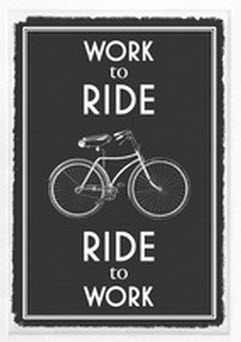
What to Wear?
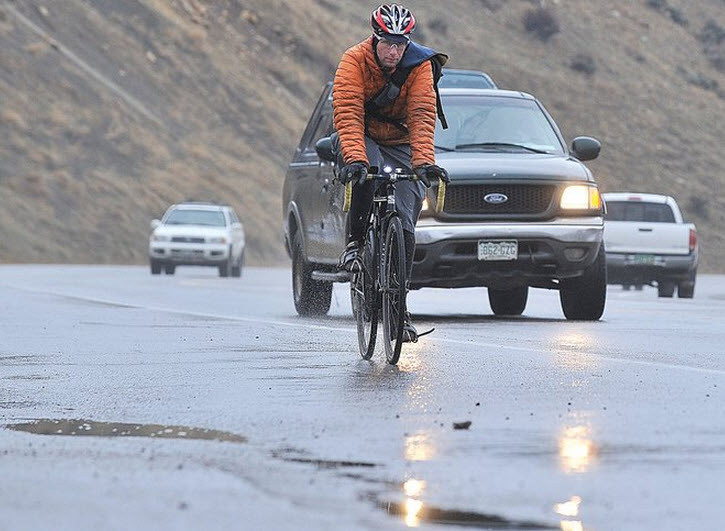
- Wear comfortable clothes. Avoid getting pants greasy or caught in the chain, secure your pant leg with a rubber band, Velcro strap, or tuck it into your sock.
- Adjust your body temperature while riding by wearing several thin layers. Wool, wool blends and fleece can work best for winter rides.
- Rain gear is essential in wet weather. Make sure your back is covered (bike tires splash puddles up).
- Pack a pair of extra socks on wet days or put plastic bags over your shoes. Waterproof shoe covers work best.
- A cycling cap with a visor can fit under your helmet and shields your eyes in bright sunlight.
- A winter headband fits under your helmet and protects your ears in cold weather.
- Cycling gloves can add extra padding to make your ride more comfortable. Windproof/waterproof gloves or mittens are essential in providing protection against cold breezes and keeps them dry on rainy days.
- If you dress up at work, bring an extra change of clothes on your bike and roatate riding outfits so you can always have a one clean. If your place of employment has a employee gym and showers are available to you this is an opportunity for you to freshen up, or if a fitness facility is near and you are a member, that may be an option to clean up after your morning commute as well.
- Wear to be seen! Hi-vis (high visiblity) and refelctive clothing are highly encouraged to make sure motorists and others on the road can see you!
- Helmets aren't required by law, in Wisconsin, but we advocate for them and are very important for your safety.
What to Bring Along, Equip Your Bike
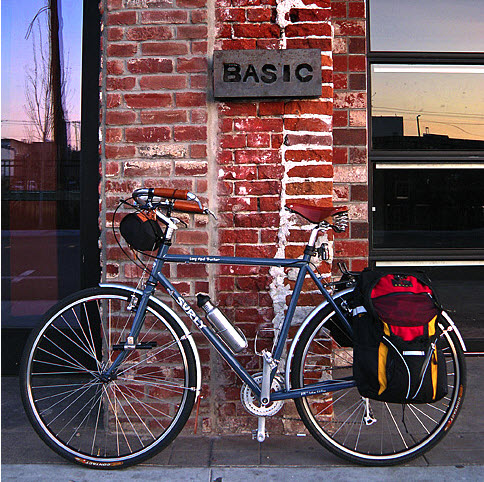
You don't need much to have a safe and comfortable ride! The more you ride, the better idea you'll have of what items works best for you. Read these ideas to get you going.
- Lights are required for your bike at dawn, dusk, and at night. Make yourself visible with a solid white light. A smart accessory to have when you are commuting during darker times of day, when it's really cloudy, foggy and/or raining will make you more visible on the road.
- A red rear reflector is the minimum required by law in wisconsin, but we recommend an additional flashing red light for increased safety.
- Alerting others of your presence is extremely important. It protects yourself and them. A bell or voice is an audible warning and required by law when passing a pedestrian.
- A rear rack and basket or panniers can make carrying things easier and increases the usefulness of your bike. You can also add a front rack or handlebar bag for even more storage. It also allows you to bring more stuff than if you only had a backpack. It frees your body for a more comfortable ride.
- Fenders are essential if you are plan on riding in the rain.
- A patch kit, hand pump and/or CO2 inflator, tire levers, and a spare tube for those unexpected flats! Learn how to change your flat tire, it will give you confidence on every ride. Check out SSC's free flat tire clinics.
- A nice bike lock is important, especially if you can't bring your bike into work. There are two different kinds of locks, cable and u-lock. Cable locks can be snipped. Use precaution when locking up your bike, make sure it is in an area where those wanting your bike will think twice before trying to break your lock to get your bike. Also, having a nicer u-lock will ensure your bike will be safe, most likely when your bike is locked up for long periods of time or overnight. Bought a Kryptonite lock? Enroll in their Anti-Theft Protection program; their guartentee your bike won't get stolen using their lock or they will reimburse you for your bike up to a certain amount. Police report and cut/damaged lock is required.
- Extra bungee cords & tie downs. Old bike tubes are a great use for an extra cord or tie down.
Getting Started!
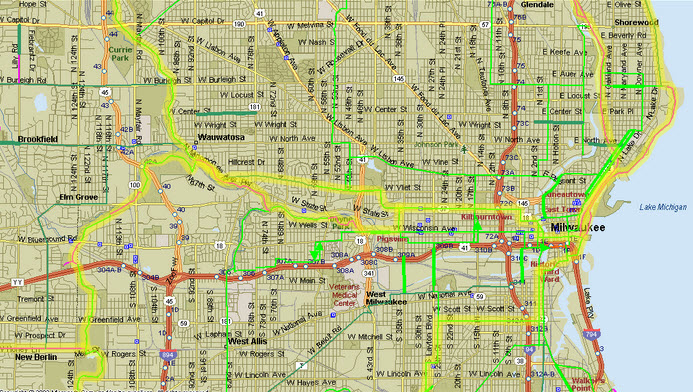
- Plan your route choosing bike-friendly streets.
- Consult your local bike map. Visit South Shore Cyclery and receive a FREE Milwaukee Bike Map for your week of commuting. A great source to find the best route for your route to work. Get yours so that you'll be prepared for Bike to Work week.
- Perform a thorough safety check to make sure your bike is in safe working condition. This is an especially important if your bike has been sitting unused for awhile. If your bike needs some love, bring it to South Shore Cyclery for service. Our turn around time for bikes is about 5 days. Also, we have Park Tool School classes during the winter. These classes are great for you to learn more about the wonderful world of basic bicycle mechanics.
- Plan ahead and give yourself some extra time.
- Air up your tires and lube your chain! Did you know bike tires are always losing air? It's important that your tires are pumped on an regular basis if you ride daily. This will create a smoother and faster ride, as well as help with pinch flats. Lubing your chain monthly will help the wear of your chain and the feel of your ride. On really wet, muddier days White Lightening Wet Ride can be used during these more extreme conditions.
- Check the weather, pack the appropriate clothes.
- Secure your packs & bags in a comfortable manner.
- Smile, get on your bike and GO!
Ride Safely
A proper fitted helmet can save your life.
Make sure you can't easily move the helmet side-to-side. When the helmet is positioned it should be directly on top of your head, not tilted backwards.

Helmet should be level, front to back and side to side. It should sit two finger lengths above your eyebrow to the helmet rim. Side straps should join immediately below the earlobe. Your chin strap should be snug with room no more than one finger.
Be a predictable rider.
Ride in the same direction as traffic, in a straight line. Do not weave in and out of parked cars. Avoid passing cars on the right at intersections and driveways. Turning vehicles may not see you.
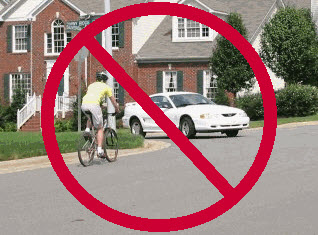
Obey traffic signs & signals. Make eye-contact with drivers and signal your turns.

What to do when the chain slips?
Your chain can sometimes slip off while riding! It's easy to get back on the road, here's how...
1. Immediately stop pedaling if the chain slips off.
2. Pull safely to the side of the road.
3. Set your bike against a sturdy object such as a pole or tree with the chain side facing you or flip your bike upside down so that it's resting on the seat and handlebars.
4. Pull the chain toward the front of the bike, which will move the derailleur forward and slacken the chain.
5. Re-seat the chain on the middle front chain ring.
6. Move your shifter to correspond to the middle front chain ring.
7. Position your bike upright. Lift the rear of the bike and use your hand to move the pedals around a few times forward.
8. Hop on the bike and start pedaling slow.
9. Shift your gears and continue riding.
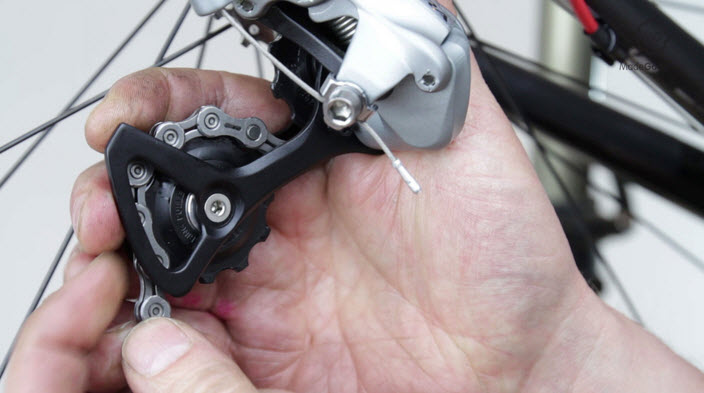
Securing Your Bike
Dont' let this happen to you!
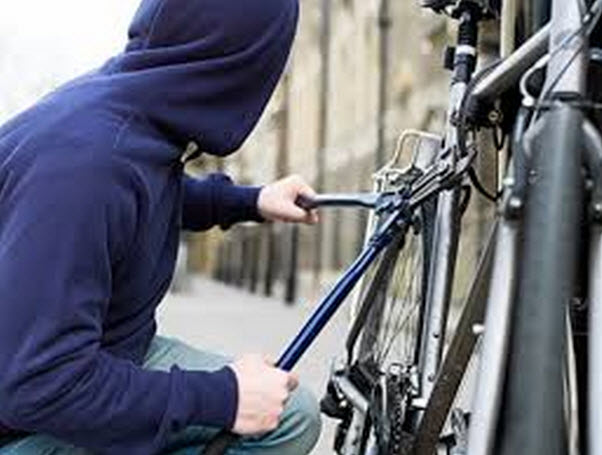
Use a u-lock to secure your rear wheel and frame to a solid object. Run a cable through your u-lock if you cannot secure the wheel with your u-lock. Or remove the front wheel & lock to rear wheel, frame, and rack.
Best protection is to park your bike where you can see it while you are away from the bike.
Always lock your bike, even during a quick stop: a friend's porch, in front of a store.
Never lock a bike to only itself.
Avoid leaving your bike locked up outside overnight. Parts can be stripped, even when the bike frames and wheels are locked up. With some effort even good locks can be removed.
